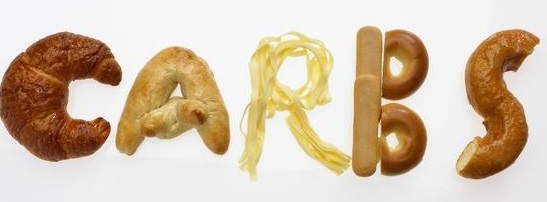Carbohydrates, which are also known as saccharides, provide the body with quick, fast burning energy. Carbohydrates consist of three elements: oxygen, hydrogen and carbon. They are molecular compounds that not only deliver the body with energy, but also act as components in other molecular structures, such as DNA. Carbohydrates can be consumed in various varieties and the numerous building blocks of carbohydrates are discussed in this article.
Sugars
There are 2 types of sugars that help in building carbohydrates, which are classified as monosaccharides and disaccharides.

1. Monosaccharides
Glucose
Glucose is a metabolized sugar within the body and it's the primary sugar used by tissues and cells to get energy. Glucose is transported within the body via blood, and you can test the levels of glucose within your body by testing your blood sugar levels. It presents in certain fruits (grapes, for example), and can be hydrolyzed from numerous substances, such as cane sugar (sucrose), mal syrup (maltose), milk sugar (lactose) and starch.
A high glucose level may indicate diabetics, while a low glucose level means you may have hypoglycemia. Both of the conditions can be chronic and even life-threatening. Sugar-rich foods, refined-carbohydrate meals, poor exercise habits or high levels of stress can all lead you to have an imbalance in your blood sugar levels.
Fructose
Fructose is the natural sugar, sweeter than cane sugar, found within many fruits, fruit juices, honey and certain vegetables. Fructose, when consumed, is absorbed directly into one's blood, as opposed to cane sugar which is metabolized into either glucose or fructose. Fructose within the body can also be converted to glucose within the liver in order to give the body a quick energy boost.
Galactose
When the body metabolizes lactose (milk sugar), it is broken down into galactose. This sugar is transformed within the liver into glucose, which is then synthesized within the mammary glands to produce the lactose within a mother's maternity milk.
Ribose and Deoxyribose
These sugars are pentoses, which are made up of 5 carbon atoms. Ribose makes up part of RNA, whereas Deoxyribose makes up part of DNA.
2. Disaccharides
Lactose
Also known as milk sugar, lactose is the only sugar which is produced within animal. Lactose is made up of two molecules, glucose and galactose, and is broken down by an enzyme called lactase. Those with low levels of this enzyme may have difficulty digesting milk and the carbohydrates (milk sugars/lactose) within it.
Sucrose
Also known as cane sugar or white sugar, sucrose is also made up of two molecules, glucose and fructose. In its crystalized form, it is the common table sugar that can be found in many households. Sucrose is used in a vast array of foods and beverages, including salad dressing, mayonnaise and even baby food. Many bad health implications have been attributed to overconsumption of this disaccharide, including diabetes, obesity, tooth decay, etc. For this reason, it is best to avoid the consumption of high amounts of this sugar.
Maltose
Also called malt sugar, maltose is a small chain of glucose molecules, two in total. This type of sugar is found within beer, some breakfast cereals and malted foods. Maltose can easily be broken down by the body into glucose molecules and give your body a quick energy boost.
Polysaccharides
Polysaccharides or starches are other molecules that make up the building blocks of carbohydrates. Polysaccharides are also known as complex carbohydrates, due to the fact that they are comprised of lengthy binds of glucose.
1. Starches
Starches are made up of lengthy chains of the molecule glucose. These molecules require different chemical catalysts and enzymes to be metabolized and broken down. Starches offer a more consistent level of blood sugar control than simple sugars because the later causes one's blood glucose level to increase and decrease rapidly.
Some common complex carbohydrates consumed in the average diet include potatoes, rice, wheat, corn and vegetable roots. There are numerous types of starches, such as amylopectin which has short polysaccharide chains and is easily broken down, amylose which has long chains.
2. Glycogen
This type of starch is of animal origin, which is found in muscle and liver. Its structure is similar to that of amylopectin, meaning that it can be broken down quickly and utilized for energy. Also, when the body has excess amounts of glucose, it can be transferred into glycogen and stored within the liver.
Fiber
Fiber is the final building block of carbohydrates to be discussed in this article, and unlike the abovementioned building blocks of carbohydrates, fiber consumed within food will offer little to no benefit in terms of energy. It is, however, utilized by the body to assist digestion and excretion.
1. Cellulose
Cellulose is perhaps the most common form of fiber, which is found on the skin of fruit and vegetables, as well as on cereal grains, like wheat bran. This form of fiber is indigestible, but it is beneficial in terms of digestion because it can lower the risk of constipation, gastrointestinal disorder, appendicitis, etc.
2. Hemicelluloses
This type of fiber is found in a plants cell wall. Hemicelluloses are great at binding water, making them extremely beneficial in terms of digestion and excretion. Hemicelluloses are often utilized in supplements with the intention of promoting a quick bowel movement. Psyllium seed husks and citrus foods' rind are good sources of this fiber.
3. Alginate
This fiber is found within seaweed and has proved useful in programs of detoxification from metal poisoning because it can bind metals such as mercury and lead within the intestines.
4. Agar
This fiber can also be found in seaweed and it is often utilized by chefs to give a gelatinous consistency to food.
5. Carrageen
Carrageen is a fiber that derives from the Irish moss plant, and it is often combined with dairy products, such as yogurt, to help in achieving a smooth consistency.
